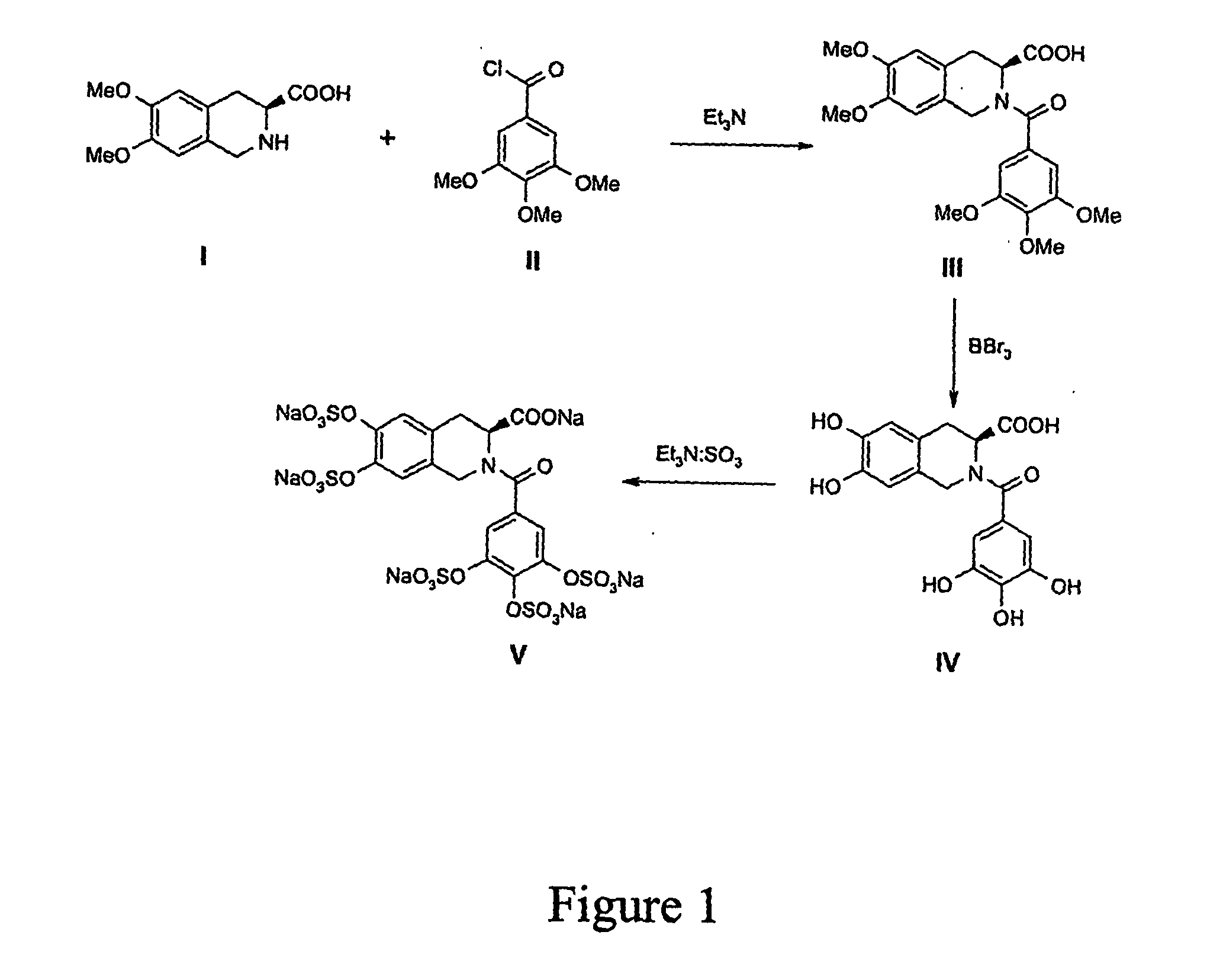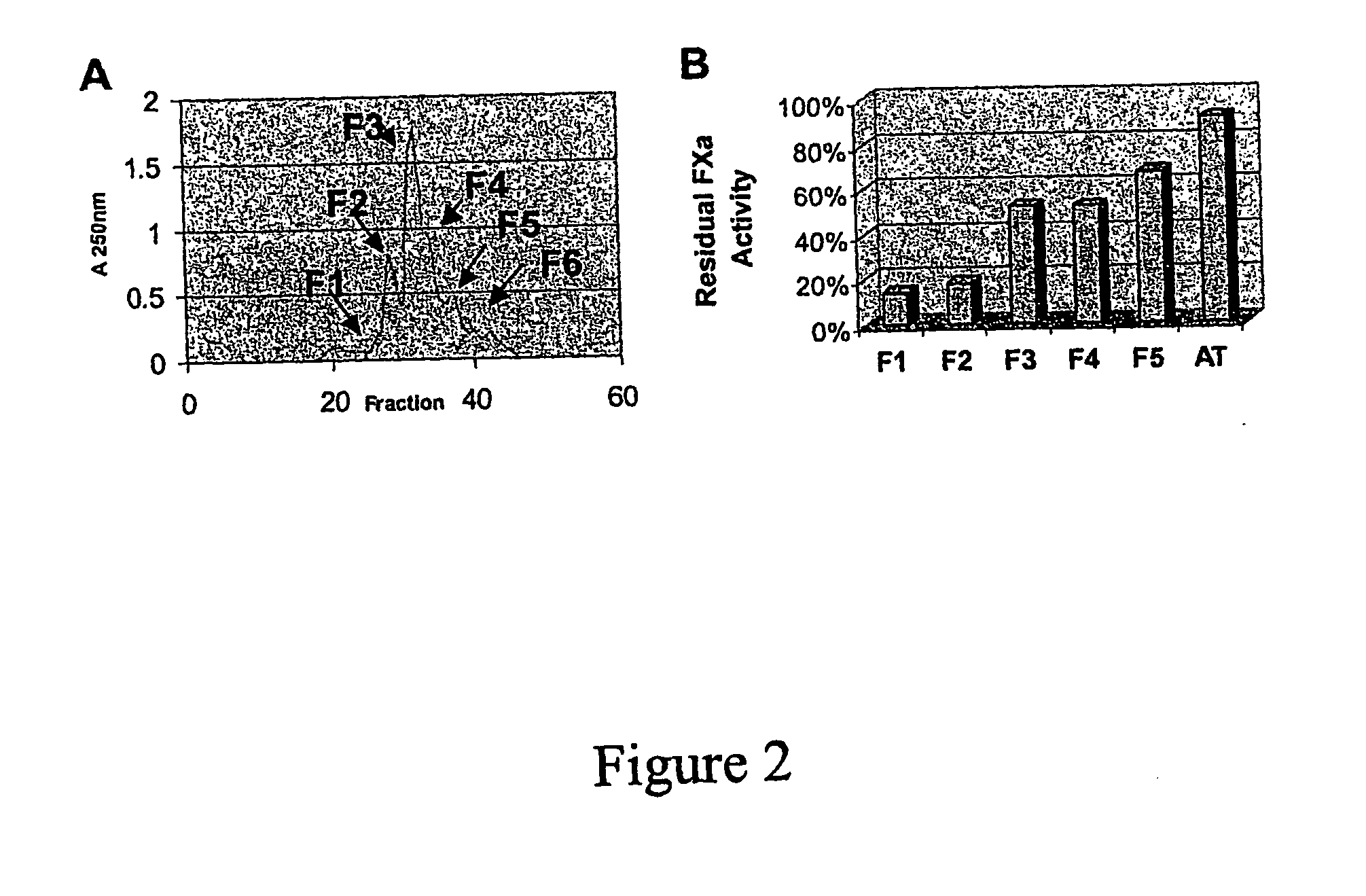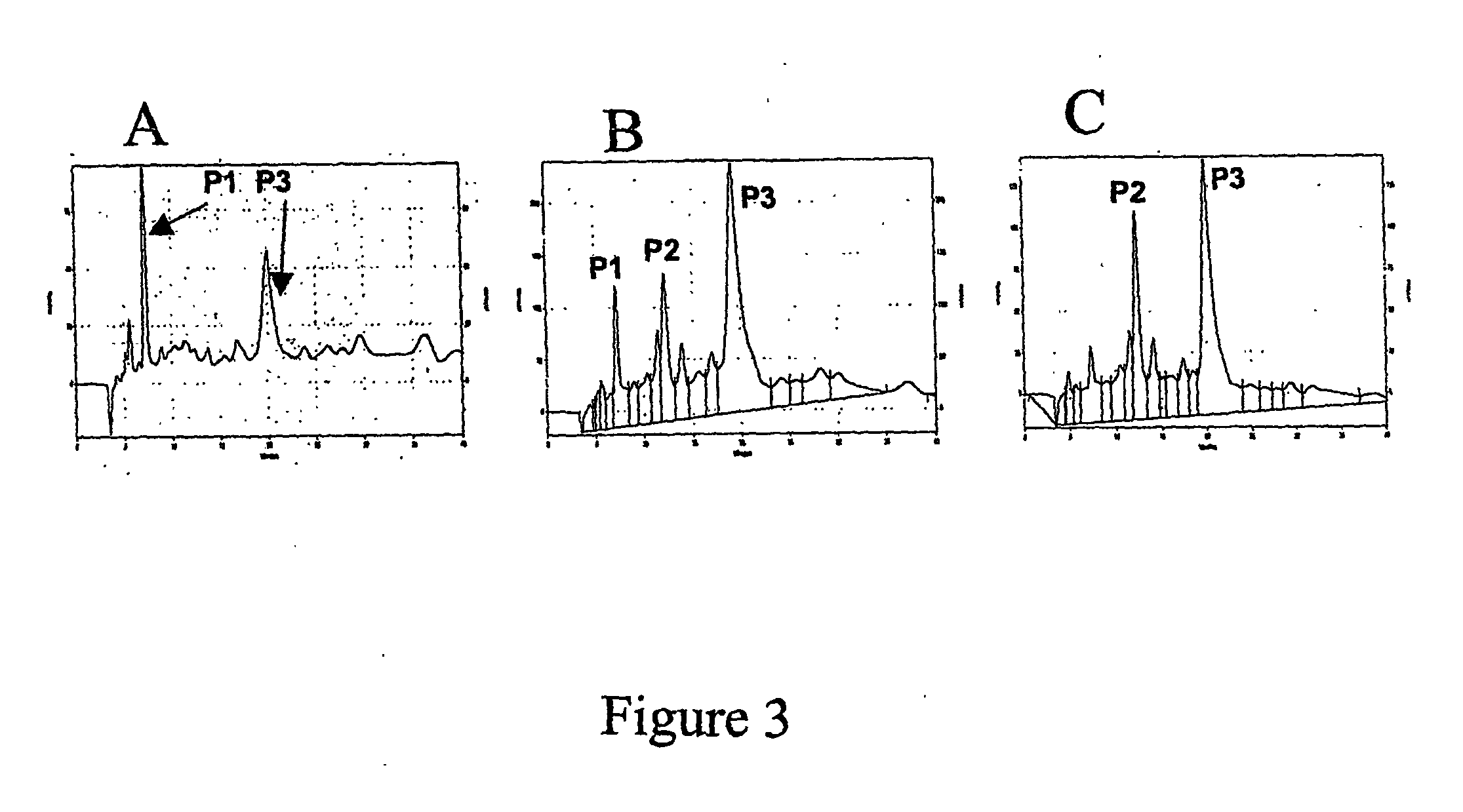Sulfated bis-cyclic agents
a sulfated biscyclic agent and compound technology, applied in the field of anticoagulants, can solve the problems of complex and low-yielding synthesis of pentasaccharides, heterogeneous lmwhs, and still polydisperse in commercial preparations for clinical administration, and achieve the effect of potent anticoagulant activity
- Summary
- Abstract
- Description
- Claims
- Application Information
AI Technical Summary
Benefits of technology
Problems solved by technology
Method used
Image
Examples
example 1
Synthesis of Polysulfated Compounds
[0025] The polysulfated compounds are synthesized as a mixture followed by chromatography to isolate individual molecules. Referring to FIG. 1, first, a methoxy-substituted isoquinoline, e.g., I, is made to react with a methoxy-substituted benzoyl chloride, e.g., H under basic conditions to obtain the methoxy-substituted bis-cyclic agent, e.g., III. This reaction is performed under anhydrous conditions at room temperature or lower to obtain in quantitative yield product III. The bis-cyclic agent is then made to react with boron tribromide in carbon tetrachloride at −20° C. to deprotect the methoxy groups and obtain IV.
[0026] The multi-phenol IV so obtained is then sulfated with triethylamine-sulfur trioxide complex at 65° C. in dimethylacetamide to obtain the polysulfated bis-cyclic agent V. The reaction is allowed to proceed for overnight under anhydrous conditions in nitrogen atmosphere. Some coloring of the reaction mixture is observed. The re...
example 2
Separation of Mixture into Fractions with Differing Sulfate Groups
[0027] The mixture obtained in Example 1 includes compounds that are differentially sulfated at the substitution sites. The mixture is separated into individual components using traditional gel-filtration and weak anion-exchange chromatography. This mixture is passed through a gel-filtration column that resolves molecules in the range of MW 200-1,000 to yield several fractions (e.g. F1 through F5, FIG. 2A).
[0028] A key test of in vitro anticoagulant activity is the inhibition of Factor Xa., a critical enzyme involved in blood clotting. This enzyme is central to the overall phenomenon of clot formation and the heparin pentasaccharide that is clinically available as an anticoagulant primarily inhibits this enzyme to exert its therapeutic effect. Biochemical analysis of fractions F1 through F5 for inhibition of antithrombin-dependent factor Xa activity showed that fraction F1 exhibited the highest inhibition, and that ...
example 3
Anticoagulant Activity Testing
[0030] Each fraction obtained as in Example 2 was further purified on DEAE-anion exchange column. The results for fractions F1, F2 and F3 are shown in FIGS. 3A, 3B and 3C, respectively. As can be seen, Fraction 1 yields two major peaks, P1 and P3; Fraction F2 yields three major peaks P1, P2 and P3; and Fraction F3 yields two major peaks, P2 and. P3. Chemical analysis of peaks P1, P2 and P3 indicate that peak P1 is the fully sulfated molecule, (3S)-6,7-bis-sulfonato-2-(3,4,5-tris-sulfonato-benzoyl)-1,2,3,4-tetrahydro-isoquinoline-3-carboxylate, while peaks P2 and P3 have one or two less sulfate groups, respectively, either in the isoquinoline or the phenyl ring system.
[0031] Each peak was isolated and its factor Xa inhibition potential was determined at concentrations in the range of 1-50 μM. The results at 10 μM concentration of sulfated compound are given in Table 1. The date show that the pentasulfated bis-cyclic molecule ((3S)-6,7-bis-sulfonato-2-(...
PUM
| Property | Measurement | Unit |
|---|---|---|
| body weight | aaaaa | aaaaa |
| body weight | aaaaa | aaaaa |
| body weight | aaaaa | aaaaa |
Abstract
Description
Claims
Application Information
 Login to View More
Login to View More - R&D
- Intellectual Property
- Life Sciences
- Materials
- Tech Scout
- Unparalleled Data Quality
- Higher Quality Content
- 60% Fewer Hallucinations
Browse by: Latest US Patents, China's latest patents, Technical Efficacy Thesaurus, Application Domain, Technology Topic, Popular Technical Reports.
© 2025 PatSnap. All rights reserved.Legal|Privacy policy|Modern Slavery Act Transparency Statement|Sitemap|About US| Contact US: help@patsnap.com



